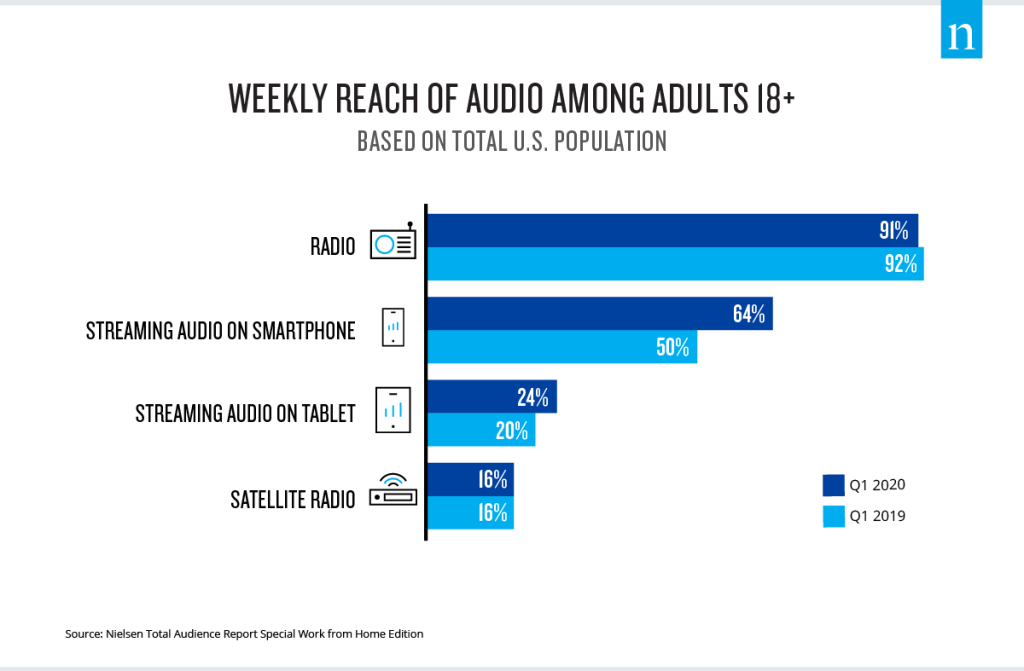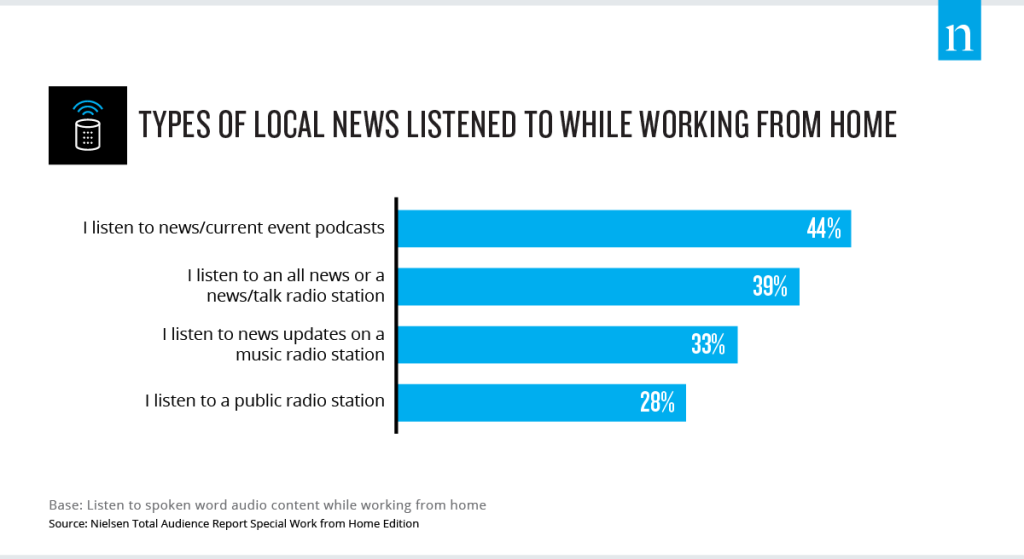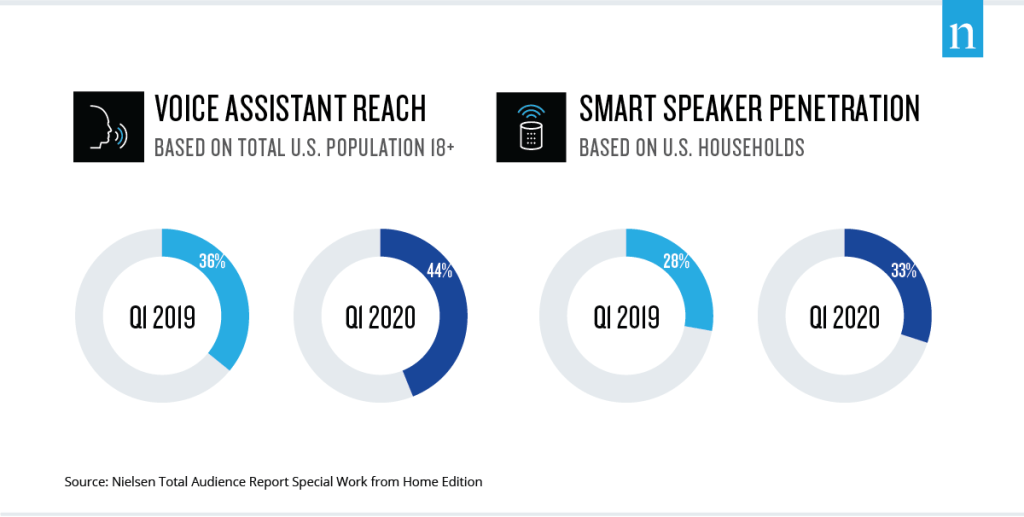Radio is such a ubiquitous commute companion that when many Americans were asked to work from home earlier this year due to COVID-19, the industry wondered how Americans would listen.
In 2020 audio entertainment remains a fixture of American life. Radio—and innovations like the digital music streaming services—have helped launch podcasts into the limelight, drive discovery to new music, entertain us and keep us up to date on the latest news, both local and national.
So when the pandemic kept consumers in the confines of their respective homes, they turned to their old friend, radio, to keep them company and inform them, as it has always done so reliably throughout history.
three quarters (75%) of people listen to music while working from home at least once a week, and 40% reported tuning in daily—the highest share percentage of media-related activity of any media outlet.
Nielsen’s total audience Report Work from home edition
In fact, radio has become the perfect co-worker and best daytime companion for many remote workers. According to Nielsen’s Total Audience Report: Work from Home Edition, three quarters (75%) of people listen to music while working from home at least once a week, and 40% reported tuning in daily—the highest share percentage of media-related activity of any media outlet.
After all, AM/FM radio remains the centerpiece of the audio universe, reaching more than nine-in-10 U.S. adults each week, more than any other media platform, including 95% of Hispanic adults 18 and older.
At the same time, consumers are complementing their broadcast radio use by streaming audio through their smaller, mobile personal devices. Among adults, the weekly use of smartphones and tablets grew 28% and 20%, respectively, compared with the same quarter last year.

Isolated from the usual office grapevine of information and unsure of when they could return to a “normal” life, homebound workers didn’t ditch their news audio with their largely commute-free lives. Instead, the Nielsen Remote Workers Consumer Survey found that people leaned into familiar and trusted companions in the form of radio and podcast hosts, who kept them up to date on the ever-shifting pandemic guidelines and civil unrest across the country. In fact, over half of survey respondents (53%) said they listened to talk radio, radio news and podcasts weekly.
When working from home, four-in-10 people listening to ‘spoken word’ audio sourced their local news from current event podcasts and all news or news/talk radio stations.
“Remote working has placed a newfound focus on our immediate surroundings,” said Peter Katsingris, SVP, Audience Insights, Nielsen. “Many Americans have turned to radio and podcasts, even during work hours, to help them stay informed and connected to their community. Brands may want to tailor their messages to better capture the attention of multi-tasking listeners, address consumers’ concerns around their community, and focus on building trust.”

Although America is on a slow path to re-emergence from the pandemic, working from home is appears to be a long-term reality for many, at least until a viable vaccine can be scaled. As such, home life has been reconfigured to better meet this ‘new normal,’ from investing in gardens to improving at-home workstations. This includes equipping houses with smart speakers and connecting voice assistants to different devices and vehicles.
Today, nearly one-third of U.S. households now have smart speakers, a co-worker of another kind altogether, which specialize in delivering audio content, as well as following voice commands. For those working from home and enjoying high-quality music or talk radio in the background, smart speakers and voice assistants can simplify the multi-tasking media experience, enabling people to seamlessly work, and control volume and channels.

“The pandemic has brought shifts in media behavior and audio is no exception,” said Katsingris. “But even post-pandemic, it’s likely that many companies will embrace a larger remote workforce. Meaning, that these behavior changes could be permanent. As a marketer, thinking about more audio-integrated stories might be a great way to connect with your audience.”
VISIT THE NIELSEN TOTAL AUDIENCE REPORT HUB
Explore the latest related insights, media usage trends, and past reports.



